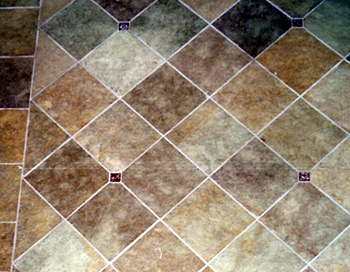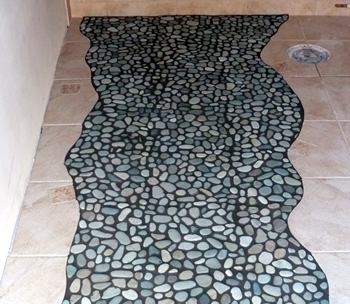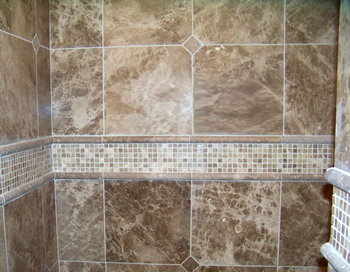Is Natural Stone the Right Choice for Your Floor?
Natural stone floors are suitable for use in both business and residential settings. Natural stone not only provides an appearance of elegance and sophistication, but also offers practical advantages when using it for flooring material.
Some of the commonly used stones include travertine, slate, marble, granite, sandstone, limestone, and agglomerate stone. Every piece of stone is unique, and each one has special veining, coloring, and natural characteristics.
Among the advantages of stone flooring is that it can help keep the climate cooler in your home. This is especially beneficial in warmer climates. Stone floors are also very sturdy and durable, and very resistant to stains, making them trouble-free and easier to maintain than other materials. Marble treated with a stain-resistant sealer can last for years before resealing, depending on materials used, the environment, maintenance, and traffic. Adding stone flooring to your home creates a stylish and classy ambience.
Are their drawbacks to stone floors compared to carpet or wood? Stone floors are typically more expensive than most other flooring options, due to the cost of materials and the extra labor involved with installation. And, during the winter season, stone may make the temperature in your house seem cooler, but that's usually remedied with the use of area rugs and runners. Or, you can choose the option of a heated floor which will keep your floors warm in the winter.
Among the various stones available, travertine is among the most desirable and commonly used. Travertine is a form of limestone which develops from mineral springs, especially hot springs. It is available in grey, tan, cream-colored, and coral pink varieties. It was used as a building material as far back as ancient Rome. Travertine in its natural form is characterised by pitted holes and troughs in its surface. Some installers use a grout to fill the holes, whereas others leave them open – travertine can be purchased "filled" or "unfilled" and can be polished to a smooth, shiny finish, and comes in a variety of colors from .
Marble is another derivative of limestone, and has been used even in the ancient world in home decor. Marble is a metamorphic stone that can be polished. There are thousands of different types and colors and patterns of marble which come from all around the world. For example, Emperador marble is a luxurious dark brown with dramatic striations of white. Since marble is a "softer" and less durable stone, it may not be the best choice for high-traffic areas. And because it is porous, it's not usually recommended for high-moisture areas like bathrooms or kitchens, and it can be susceptible to damage from chemical and oil-based products like nail polish, hair spray, grease, and cleaning fluids.
Granite is extremely hard, second only to diamond, and it's more durable than marble or travertine. Granite is made up of feldspar and quartz, and is stain and scratch resistant. Granite is also commonly used for kitchen countertops. This extremely durable stone resists wear in virtually any application. Though even granite can be damaged by chemicals or oils left on the surface. Be sure to clean up any spills right away!
Gallo Veneziano is a popular type of granite that comes from the mountains of Brazil, and is a brown taupe color with vibrant colors of gold, black, and brown. Black Galaxy comes mostly from India, and is mainly black with flecks of gold and white crystals.
Slate is a very versatile stone that can be for both interior and exterior usage. Slate is metamorphic rock that comes from mainly India and China. All slate pieces have a natural terracing effect on the surface that adds visual interest. Slate is very dense and is composed of shale, clay, quartz, mica, calcite, and chlorite. It's also water-resistant and non-slippery, which makes is the perfect candidate for areas around pools or patios. Slate comes is a wide array of colors: red, gold, orange, brown, blue, green, black, and mauve.
All stone floor coverings require regular maintenance and cleaning. Stone floors should be resealed and polished every one to three years. And stone floors can be cracked or chipped if heavy objects are dropped on them.
If you're thinking of natural stone flooring for your home, seek out the help and advice of a flooring or design professional with years of experience and resources to find just the right stone and color and pattern for you. You'll discover that stone can greatly beautify your home and permanently improve its value. Stone may be the perfect flooring choice for you!
- Back to our Resources page for more information and additional articles.
- Contact us today for your home remodeling consultation.
- Find out more about remodeling and renovation services provided by McClincy's.
- Contact McClincy's 24/7 for the emergency help you need with damage from water, flooding, fire, smoke, wind, or storms.
Source: Marble Institute of America





